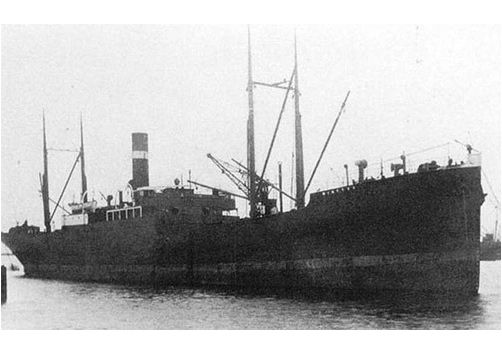
This English cargo steamer sank accidentally after colliding with Bajo de Fuera on May 31, 1899. It is believed to have been carrying railway tracks because a good number of them are scattered in that area. If we advance just 15 meters from the bow of the Sirio, we find the remains of the Minerva, in an inverted position, between -40 and -60 meters, parallel to the shallows on its SE face; and that is why it is known as Boca Abajo (Upside Down).
In its starboard fin there is a hole through which it is possible to access the interior. Divers like to explore it from end to end. Some remains can be seen that show us that we are in the bowels of a ship. We exit through the immense crack that opens the hull practically in two as we approach the bow. The tour inside is only recommended for experienced divers due to its danger. It is advisable to go from stern to bow above the inverted keel.
As we move away, we can see a disturbing scene, if we are fortunate enough to have good visibility, enveloped by the shadows, the image of the disaster opens before us; to our right, the vision of the boat upside down and open in the channel, and to our left, the almost vertical slope, partly hidden by metal remains that once formed part of the cargo, who knows if from one or several ships.
Some divers found the bell with its name under the wreck, so it is clearly identified, unlike others that are scattered in the same area, such as the Kasenga, the Ízaro or the Primo.
To dive here: For your health and safety, it is important that you do this dive without being tired or in poor physical shape. The use of your own dive computer is mandatory. Gloves, a flashlight, and a knife are recommended. The dive will be planned based on the divers’ experience in wreck diving.
Qualification: Experienced Advanced Diver, TEC45 recommended